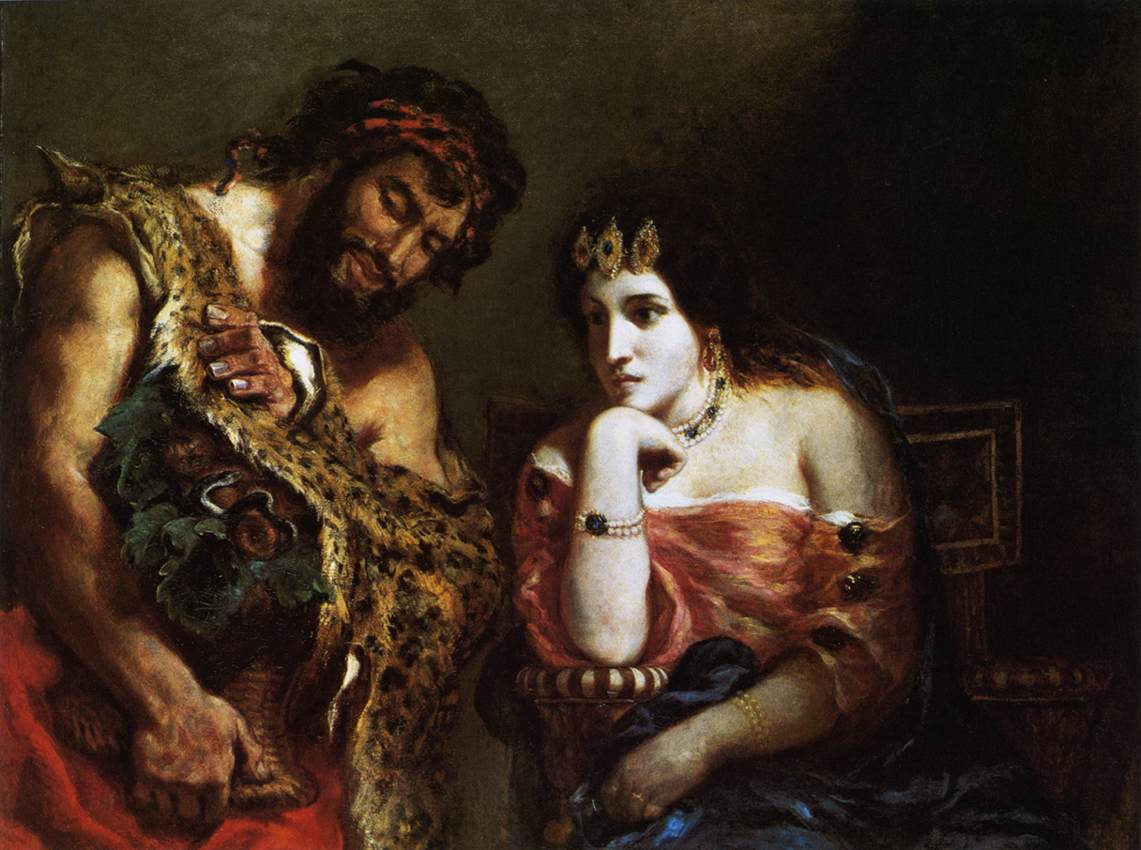Delacroix was a student of English literature, and the most famous face of English literature is William Shakespeare. In his Anthony and Cleopatra, after Mark Anthony was killed, Cleopatra wanted to kill herself instead of being taken over by Augustus Caesar. This is the scene Delacroix based this painting on. It’s quite apparent that Cleopatra is in a morbid state. However, why is the snake provoking this sense of impending doom and death? Snakes have been used as a symbol of death for thousands of years, even dating back to the ancient Greeks. In the context of this scene in Shakespeare’s play, Cleopatra proclaims that she would rather die than be captured. This proves that she had lost her fear of death and accepted it when she saw the snake. In fact, in the play and in the historical account of Cleopatra’s death, she kills herself by a snake bite. Furthermore, snakes have always been a historical symbol of evil, the main example being the one that convinced Eve to eat the apple in the Garden of Eden. Somehow this scene looks somewhat like the scene in Delacroix’s painting. Also, within Christian theology, fig trees are symbols of God’s love for his blessing and his special love for people ("The Parable of the Barren Fig Tree.") Even though Cleopatra is not a Christian, this scene was painted in France during the mid nineteenth century, historically a very Christian country. Cleopatra wants to kill herself, but according to Christian theology, it is a sin to take one’s own life. The presence of the snake symbolizes evil or death in humans when it comes to God’s blessing. Delacroix knew the audience he was painting for so perhaps he wanted to include Christian symbolism.




Cleopatra and the Peasant
oil on canvas • 98 x 123 cm
 Eugène Delacroix
Eugène Delacroix